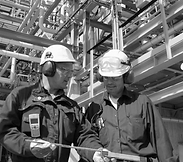Engineering and Technology Quarterly Reviews
ISSN 2622-9374




Published: 08 August 2025
Magnitude Conversion Relations for Nepal Himalaya Region
S. N. Shrestha, P. N. Maskey, G. B. Motra
Tribhuvan University

Download Full-Text Pdf
10.5281/zenodo.16757506
Pages: 1-17
Keywords: Magnitude Conversion, Nepal Himalaya, Moment Magnitude, Regression
Abstract
Magnitude conversion is a critical step in the compilation of earthquake catalogues and the assessment of seismic hazard. Given Nepal's high seismic hazard and the limited availability of Nepal region-specific magnitude conversion relations, there is a need to develop empirical relationships that account for the unique tectonic and geological characteristics of the Nepal Himalaya region. This study used existing earthquake catalogues from various institutions to develop new magnitude conversion relations for Nepal Himalaya Region. In this study, we develop new empirical relations for conversion of other magnitudes to moment magnitude. We compare and validate the relations with existing global and regional relations available in the literatures. These relations are then used to compile homogenous earthquake catalogue for Nepal Himalaya region and to perform seismic hazard analysis.
References
Ader, T., Avouac, J. P., Liu‐Zeng, J., Lyon‐Caen, H., Bollinger, L., Galetzka, J., ... & Flouzat, M. (2012). Convergence rate across the Nepal Himalaya and interseismic coupling on the Main Himalayan Thrust: Implications for seismic hazard. Journal of Geophysical Research: Solid Earth, 117(B4).
Ali, S. M., & Shanker, D. (2017). Study of seismicity in the NW Himalaya and adjoining regions using IMS network. Journal of Seismology, 21, 317-334.
Ambraseys, N. N., & Douglas, J. (2004). Magnitude calibration of north Indian earthquakes. Geophysical Journal International, 159(1), 165-206.
Amorese, D., Grasso, J. R., & Rydelek, P. A. (2010). On varying b-values with depth: results from computer-intensive tests for Southern California. Geophysical Journal International, 180(1), 347-360.
Anbazhagan, P., & Balakumar, A. (2019). Seismic magnitude conversion and its effect on seismic hazard analysis. Journal of Seismology, 23, 623-647.
Angadi, S., Hiravennavar, A., Desai, M. K., Solanki, C. H., & Dodagoudar, G. R. (2019). Development of Gutenberg–Richter Recurrence Relationship Using Earthquake Data. In Green Buildings and Sustainable Engineering: Proceedings of GBSE 2018 (pp. 281-288). Springer Singapore.
Arora, S., & Malik, J. N. (2017). Overestimation of the earthquake hazard along the Himalaya: constraints in bracketing of medieval earthquakes from paleoseismic studies. Geoscience Letters, 4, 1-15.
Awoyemi, M. O., Hammed, O. S., Shode, O. H., Olurin, O. T., Igboama, W. N., & Fatoba, J. O. (2017). Investigation of b-value variations in the african and parts of eurasian plates. Science of Tsunami Hazards, 36(2).
Bayrak, Y., & Bayrak, E. (2012). Regional variations and correlations of Gutenberg–Richter parameters and fractal dimension for the different seismogenic zones in Western Anatolia. Journal of Asian Earth Sciences, 58, 98-107.
Bayrak, Y., Yılmaztürk, A., & Öztürk, S. (2002). Lateral variations of the modal (a/b) values for the different regions of the world. Journal of Geodynamics, 34(5), 653-666.
Beauval, C., & Scotti, O. (2003). Mapping b‐values in France using two different magnitude ranges: Possible non power‐law behavior. Geophysical research letters, 30(17).
BECA WORLEY International. “Seismic hazard mapping and risk assessment for Nepal.” 1993.
Bilham, R., Gaur, V. K., & Molnar, P. (1997). Himalayan seismic hazard. Science, 293(5534), 1442-1444.
Bollinger, L., Sapkota, S. N., Tapponnier, P., Klinger, Y., Rizza, M., Van der Woerd, J. & Rajaure, S. (2016). Estimating the return times of great Himalayan earthquakes in eastern Nepal: Evidence from the Patu and Bardibas strands of the Main Frontal Thrust. Journal of Geophysical Research: Solid Earth, 121(4), 2851-2871.
Bormann, P., & Di Giacomo, D. (2011). The moment magnitude Mw and the energy magnitude Me: Common roots and differences. Journal of Seismology, 15(2), 411–427.
Chamlagain, D. (2018). "Probabilistic seismic hazard mapping for Nepal (For revision of NBC-105)"
Chaulagain, H., Rodrigues, H., Silva, V., & Spacone, E. (2015). Seismic risk assessment and hazard mapping in Nepal. Natural Hazards, 78(1), 583-602.
Christensen, K., Danon, L., Scanlon, T. & Bak, P. (2002). Unified scaling law for earthquakes. Physical Review Letters, 88(17), 178501.
Dixit, A. M., Yatabe, R., Dahal, R. K., & Bhandary, N. P. (2013). Initiatives for earthquake disaster risk management in the Kathmandu Valley. Natural Hazards, 69(1), 631-654.
Dziewonski, A. M., et al. (1981). Determination of earthquake source parameters from waveform data. Physics of the Earth and Planetary Interiors, 24(2-3), 176–186.
Eberhard, M., Baldridge, S., Marshall, J., Mooney, W., & Rix, G. J. (2015). The 2015 Gorkha, Nepal, earthquake: Insights from earthquake damage survey. Frontiers in Built Environment, 1, 8.
Ekström, G., et al. (2012). The global CMT project 2004–2010. Physics of the Earth and Planetary Interiors, 192, 10–24.
Grünthal, G. (2011). Seismic hazard assessment for central, northern, and northwestern Europe based on regional catalogues. Journal of Seismology, 15(4), 657-669.
Gutenberg, B., & Richter, C. F. (1944). Frequency of earthquakes in California. Bulletin of the Seismological Society of America, 34(4), 185-188.
Hanks, T. C., & Kanamori, H. (1979). A moment magnitude scale. Journal of Geophysical Research, 84(B5), 2348–2350.
Hofmann, R. B. (1996). Individual faults can't produce a Gutenberg-Richter earthquake recurrence. Engineering geology, 43(1), 5-9.
Kanamori, H. (1977). The energy release in great earthquakes. Journal of Geophysical Research, 82(20), 2981–2987.
Kijko, A., & Sellevoll, M. A. (1992). Estimation of earthquake hazard parameters from incomplete data files. Part II: Incorporation of magnitude heterogeneity. Bulletin of the Seismological Society of America, 82(1), 120-134.
Kolathayar, S., & Sitharam, T. G. (2012). Characterization of regional seismic source zones in and around India. Seismological Research Letters, 83(1), 77-85.
Kramer, S. L. (1996). Geotechnical Earthquake Engineering. Prentice Hall.
Kumar, S., & Sharma, N. (2019). The seismicity of central and north-east Himalayan region. Contributions to Geophysics & Geodesy, 49(3).
Lavé, J., & Avouac, J. P. (2000). Active folding of fluvial terraces across the Siwaliks Hills, Himalayas of central Nepal. Journal of Geophysical Research: Solid Earth, 105(B3), 5735-5770.
Nath, S. K., Thingbaijam, K. K. S., & Ghosh, S. K. (2011). A unified earthquake catalogue for South Asia covering the period 1900–2008. Data accessible at http://www. earthqhaz. net/sacat.
Nayak, M., & Sitharam, T. G. (2019). Estimation and spatial mapping of seismicity parameters in western Himalaya, central Himalaya and Indo-Gangetic plain. Journal of Earth System Science, 128, 1-13.
Pandey, M. R., Tandukar, R. P., Avouac, J. P., Vergne, J., & Héritier, T. (1999). Seismotectonics of the Nepal Himalaya from a local seismic network. Journal of Asian Earth Sciences, 17(5-6), 703-712.
Parajuli, R. R., & Koirala, A. (2019). Seismic hazard assessment of Nepal using probabilistic approach. Journal of Nepal Geological Society, 58, 1-8.
Parajuli, R. R., Koirala, A., & Shrestha, S. N. (2020). Magnitude conversion and homogenization of earthquake catalogues for seismic hazard assessment in Nepal. Journal of Earthquake Engineering, 24(6), 1-20.
Scordilis, E. M. (2006). Empirical global relations converting Ms and mb to moment magnitude. Journal of Seismology, 10(2), 225–236.
Shiwakoti, I. (2012). Morphotectonic and Paleoseismological Study around the Charnath Khola Area, Central Nepal (Doctoral dissertation, Department of Geology).
Shrestha, S. N., Parajuli, R. R., & Koirala, A. (2018). Earthquake risk reduction in Nepal: Challenges and opportunities. Journal of Nepal Geological Society, 56, 1-10.
Storchak, D.A., D. Di Giacomo, I. Bondár, E.R. Engdahl, J. Harris, W.H.K. Lee, A. Villaseñor and P. Bormann (2013). Public Release of the ISC-GEM Global Instrumental Earthquake Catalogue (1900-2009). Seism. Res. Lett., 84, 5, 810-815, doi: 10.1785/0220130034.
Di Giacomo, D., E.R. Engdahl and D.A. Storchak (2018). The ISC-GEM Earthquake Catalogue (1904–2014): status after the Extension Project, Earth Syst. Sci. Data, 10, 1877-1899, doi: 10.5194/essd-10-1877-2018.
Thapa, D.R., & Wang, G. (2013). Probabilistic seismic hazard analysis in Nepal. Earthquake Engineering and Engineering Vibration, 12(4), 577-586.
Utsu, T. (2002). Relationships between magnitude scales. International Handbook of Earthquake and Engineering Seismology, 81A, 733–746.
Zúñiga, F. R., & Figueroa‐Soto, A. (2012). Converting magnitudes based on the temporal stability of a‐and b‐values in the Gutenberg–Richter law. Bulletin of the Seismological Society of America, 102(5), 2116-2127.



